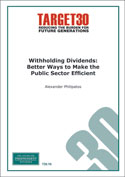
As the commission of audit has uncovered, the government must make significant cuts to spending to get the budget back into surplus. In the quest to find savings, the government cannot ignore the public service. For almost 25 years the government has turned to the efficiency dividend to find budget savings and improve efficiency in the public service. But the efficiency dividend has failed to keep costs under control.
Throughout the 2000s, agency running costs grew 23% in real terms (adjusted for inflation) despite an efficiency dividend of at least 1% throughout the decade. The dividend has also failed to curb costly changes in the size and makeup of the public service.
Since the early 1990s the Australian Public Service (APS) has grown top heavy. There are more managers at the top drawing increasingly generous salaries. But tackling these problems is not as simple as cutting the number of public servants.
New programs and policies are driving greater spending and more public servants. The public sector requires a more targeted approach to driving efficiency.
The government should make public services more contestable, either by offering competitive tender to the private sector, or by benchmarking the public service against the private sector. It should also look to continually review new policies and programs to improve the performance of worthwhile initiatives, and to cull unnecessary functions.
Alexander Philipatos is a Policy Analyst in the Economics Program. His research has included analysis of public transport infrastructure, but focuses predominantly on industrial relations and labour market policy. Alexander has a Bachelor of Economics (Hons) from La Trobe University; before joining the CIS in 2011, he was a tutor at La Trobe teaching Introduction to Quantitative Analysis.










